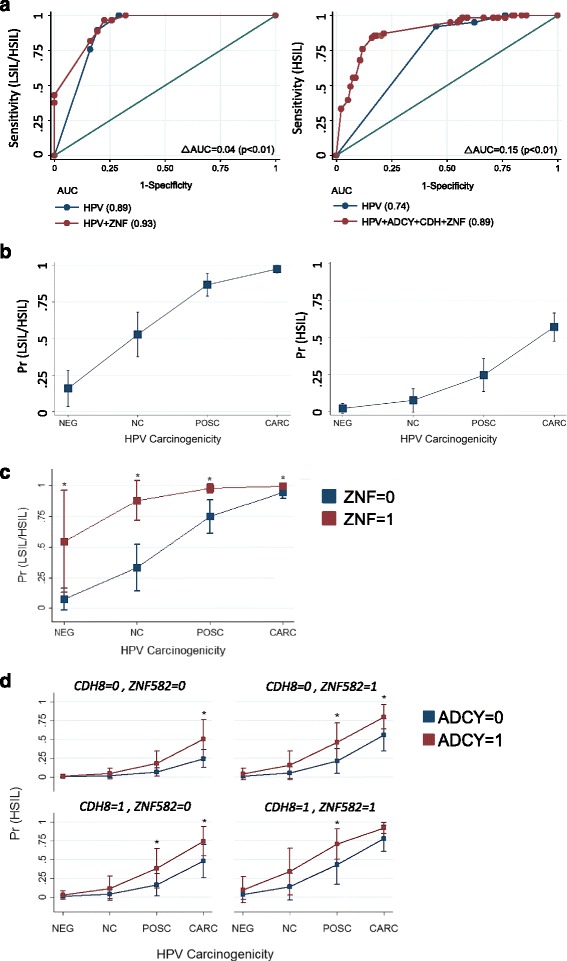Fig. 5.

Regression models and predicted probability plots for cytological grades. a Receiver operating characteristic curve analysis using cut-points derived from univariate ROC analysis of gene-specific methylation levels. Multivariable modeling revealed the best predictor to differentiate between NILM and LSIL/HSIL was HPV carcinogenicity and ZNF582_7th CpG position binarized as follows: <1.1 (0), ≥1.1 (1) (ROC AUC = 0.93). For differentiating between NILM/LSIL and HSIL cytology, the best multivariate predictor was the combination of HPV carcinogenicity, ADCY8_7th CpG-position, CDH8_3rd CpG-position, and ZNF582_3rd CpG-position (ROC AUC = 0.89); the binarized methylation values (%) used for the respective three genes were as follows: <5.8 (0), ≥5.8; <3.0 (0), ≥3.0 (1); and <1.1(0), ≥1.1(1). b Predicted probability plot of binarized cytology grades (NILM vs. LSIL/HSIL and NILM/LSIL vs. HSIL) using HPV carcinogenicity as the single predictor variable. c Comparison of predicted probabilities for abnormal cytology (NILM vs. LSIL/HSIL) by HPV carcinogenicity and binarized ZNF582 methylation level coded as <1.1 (0) or ≥1.1 (1). d Comparison of predicted probabilities for HSIL (NILM/LSIL vs. HSIL) permuted by binarized methylation values of ADCY8, CDH8, and ZNF582 at the CpG positions noted above. The four panels illustrate the escalating probability for HSIL coincident with the increasing number of methylated genes. a–d The number of cytology samples grouped by HPV carcinogenic potential among a total of 170 samples were as follows: negative (N = 29), not classifiable (N = 18), possibly carcinogenic (N = 18), and carcinogenic (N = 105). *p < 0.05 by the chi-square test and delta method for pairwise comparison of margins. ROC Receiver operating characteristic, AUC area under the curve
